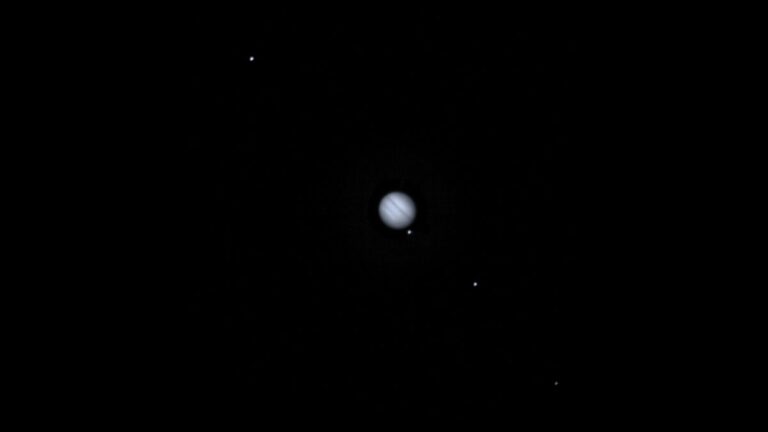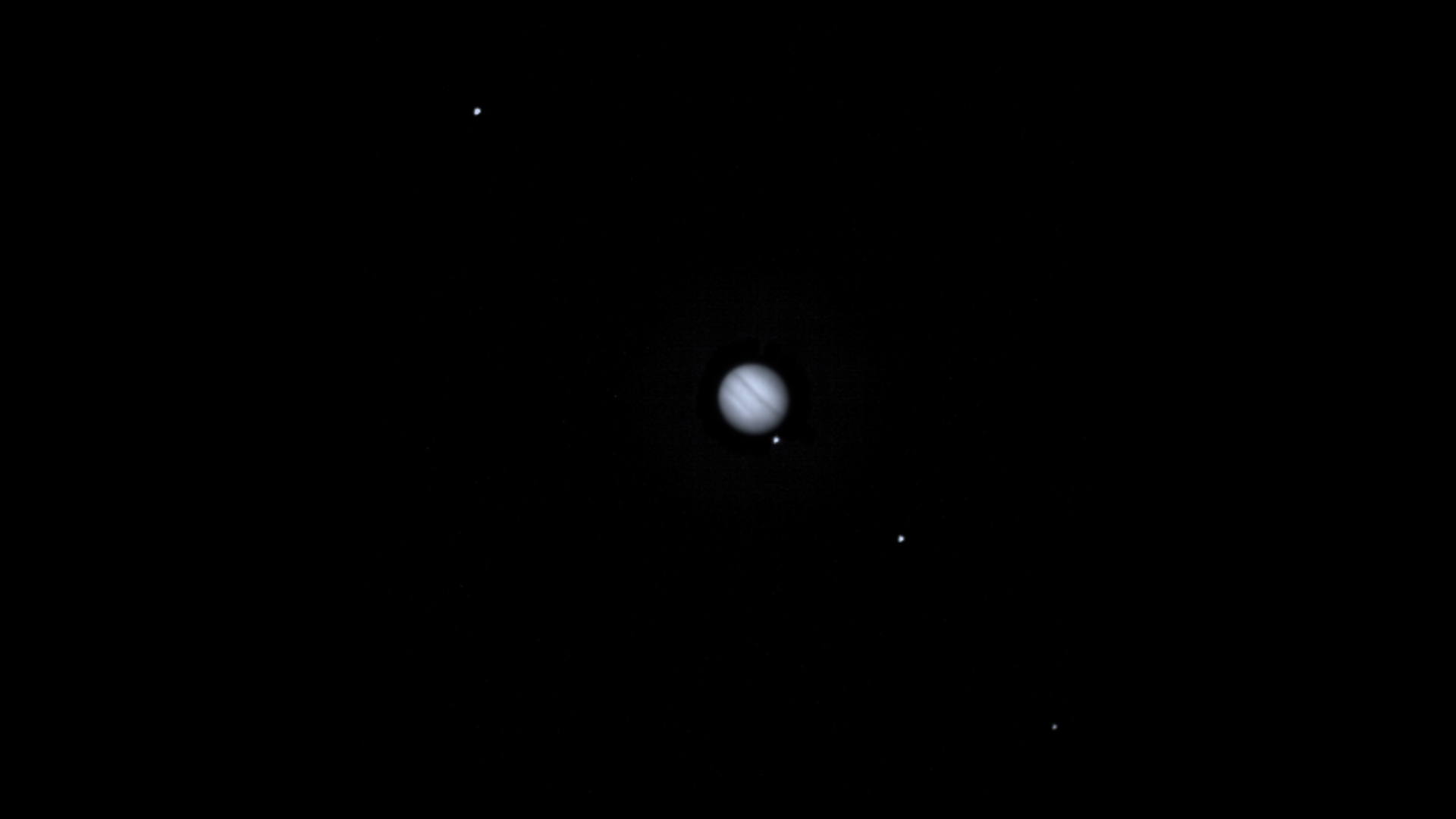
[ad_1]

NASA’s asteroid-smashing DART mission captured a photo of Jupiter and its four largest moons to test the autonomous navigation system that will lead the spacecraft to collide with an asteroid next week.
The image, which NASA released on Tuesday (Sept. 20), was actually taken over the summer, when DART was some 16 million miles (26 million kilometers) from Earth and cruising toward its target, the binary asteroid system of Didymos and Dimorphos. DART operators used Jupiter and its four Galilean moons to validate how objects that are close together appear to the DRACO camera, which is DART’s sole instrument and the heart of DART’s Small-body Maneuvering Autonomous Real Time Navigation (SMART Nav) system.
The team was particularly focused on Jupiter’s moon Europa, the closest moon to Jupiter on the planet’s right in the image, which DRACO watched visually separate from the gas giant as DART traveled. Similarly, the small asteroid Dimorphos will separate from the larger Didymos, which it orbits, during DART’s final approach to slam into Dimorphos. The test on Europa, performed on July 1 and Aug. 2, was the first verification of DRACO’s abilities performed in space.
Related: NASA’s DART asteroid-impact mission will be a key test of planetary defense
“The Jupiter tests gave us the opportunity for DRACO to image something in our own solar system,” Carolyn Ernst, DRACO instrument scientist at the Johns Hopkins University Applied Physics Laboratory (APL), which leads the mission, said in a NASA statement (opens in new tab). “The images look fantastic, and we are excited for what DRACO will reveal about Didymos and Dimorphos in the hours and minutes leading up to impact!”
The team analyzed the intensity of the objects and the number of pixels each object occupied in the image while moving across the field of view. (The image shows, from left to right, Ganymede, Jupiter, Europa, Io and Callisto.)
The DRACO camera, which is based on technology originally developed for the New Horizons mission that explored Pluto, will guide DART to Dimorphos completely autonomously, NASA officials wrote in the statement. The ground control team may only interfere in case of “significant and mission-threatening deviations from expectations,” NASA said. Optimizing the camera’s performance will therefore help the teams better interpret the situation just before the impact.
“Every time we do one of these tests, we tweak the displays, make them a little bit better and a little bit more responsive to what we will actually be looking for during the real terminal event,” Peter Ericksen, SMART Nav software engineer at APL, said in the NASA statement.
DART is set to smash into Dimorphos on Monday (Sept. 26) in a first-of-its-kind experiment designed to alter the orbit of a celestial body. The intention is to slightly speed up the orbit of Dimorphos around Didymos, a technique that one day may be used to protect Earth from a threatening space rock.
Coincidentally, on Sunday (Sept. 25), Jupiter will make its closest approach to Earth in 59 years. And on DART’s impact day, the planet will be directly on the opposite side of Earth than the sun in what astronomers call opposition. The combination means that skywatchers won’t need a spacecraft to get a stunning view of the gas giant, just binoculars or a telescope.
Follow Tereza Pultarova on Twitter @TerezaPultarova. Follow us on Twitter @Spacedotcom and on Facebook.
[ad_2]